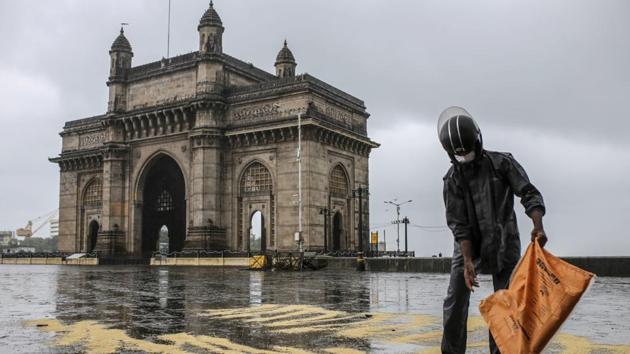‘Development matrix’ may define share given to states
Finance commissions rely on a host of yardsticks in deciding a state’s share in the nation’s financial resources, such as taxes.
The 15th Finance Commission is in the process of devising a “development matrix” of states based on their social indicators, especially in health and education, which will likely serve as a new parameter to decide the transfer of financial resources, such as taxes and grants, to them.

Finance commissions rely on a host of yardsticks in deciding a state’s share in the nation’s financial resources, such as taxes. Predominantly, income criteria, such as per capita incomes and growth, determine who gets what. Poorer and disadvantaged states get a bigger chunk of the resource pie.
“But per capita incomes are not good enough a basis compared to a holistic development index, not that the two of them are coterminous. So, we felt that a development matrix will be a better guide,” chairman of the 15th Finance Commission, NK Singh, told HT.
A “development matrix”, as is being considered, will for the first time bring the levels of social development, especially access to health-care and schooling, of states into the framework of how resources are distributed. Analysts say this could address deficits in crucial areas, such as health-care, provided states spend the additional resources for the purpose they are given.
Also read | Boost to rural economy: Record sowing points to good harvest
The Constitution, through Article 280 to 281, provides for finance commissions as a mechanism for division of taxes and revenues vertically i.e. between the Centre and states, and horizontally, i.e. among all states, based on levels of development, prosperity and regional needs.
To decide on a state’s share of resources, finance commissions usually rely on parameters such as income distance, population size, geographical location and forest cover, etc, which are then assigned weightages.
Income distance is the difference between average per capita incomes and the per capita income of an individual state in question. It gives the most direct measure of how rich or poor a state is. Forest cover is included as a parameter because it is assumed that heavily forested states will have less land to devote to factories, hurting growth. Such states qualify for additional resources.
“If the development matrix is put in place, states with poor health and education facilities will qualify for additional resources. That’s the implication and it is a welcome move,” said NR Bhanumurthy, the vice-chancellor of Bengaluru Dr BR Ambedkar School of Economics.
Economists widely hold that, over time, poorer states should come up to the level of richer states, as richer states hit their growth limits. They call this “income convergence”.
Singh said the dilemma was that in India, poorer states weren’t catching up with richer states. “We need to know what is behind this,” he said, referring to poor investment in social infrastructure.
Also read: Centre’s rural spending doubles amid Covid-19 pandemic
Singh said the 15th Finance Commission was therefore weighing the idea of including sectoral initiatives, such as health and education, in the development matrix.
“Would sectoral initiatives be helpful? And this is the idea the Finance Commission is toying with and exploring...if this could be one way of overcoming the past legacy while trying to aim for a greater convergence by not just relying on income distance but on some other parameters,” Singh said.
The Singh-led 15th Finance Commission has already submitted its first report to the government for the 2020-21 period. It then received an extension till October 30 to submit its final report covering financial years 2021-22 to 2025-26 (April-March).
Some southern states, including Andhra Pradesh, have been unhappy with the terms of reference of the 15th Finance Commission — the body is mandated to take into account the 2011 census instead of the 1971 census. This, some southern states feel, will result in penalising them for keeping population growth stable, while rewarding the northern states. In 2018, Andhra Pradesh chief minister N Chandrababu Naidu said states like his would be “penalised”, and the new development matrix could lead to similar concerns from states that have done better on social indicators.
“The commission will uphold the principles of efficiency as well as equity,” Singh said, when asked whether the new system would address these concerns.
Indian states broadly fall into high, middle and low-income categories and unlike China, poorer states have showed no signs of moving up the income ladder towards a national income convergence.
“One of the reasons is, we invest so little on health and education. These areas have an intrinsic value of their own, but also help economic growth. Including non-income parameters by the finance commission will be a significant shift,” said S Mahendra Dev, director of the Mumbai-based Indira Gandhi Institute of Development Research.
India’s overall health spending has consistently lagged global averages, leading to poor health outcomes. The total expenditure on health by the Centre and states for 2019-20 was ₹2.6 lakh crore, or just 1.29% of GDP, according to official data.
This includes salaries, gross budgetary support and transfers to states under programmes such as the Ayushman Bharat health insurance scheme. Of the total expenditure, the Centre’s share is 25%.
By comparison, the UK spent 9.6% of its GDP on health in 2019-20, according to the OECD.
Bhanumurthy said one problem is that if states with poor health and education infrastructure were to be given additional money to develop these facilities, there is still no mechanism to ensure that states use them specifically for these purposes.
Get Current Updates on India News, Lok Sabha Election 2024 live, Infosys Q4 Results Live, Elections 2024, Election 2024 Date along with Latest News and Top Headlines from India and around the world.




